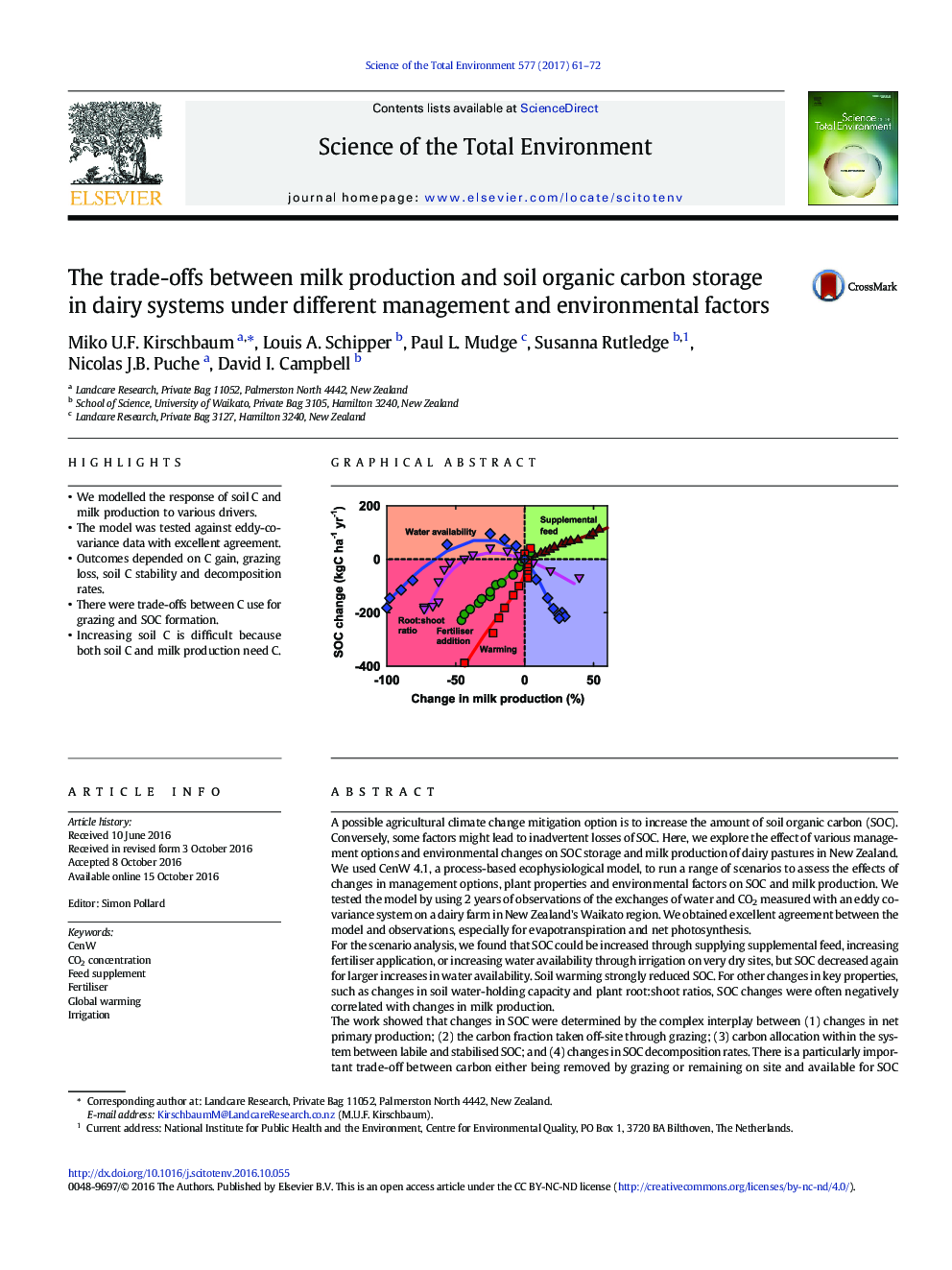| کد مقاله | کد نشریه | سال انتشار | مقاله انگلیسی | نسخه تمام متن |
|---|---|---|---|---|
| 5751705 | 1619714 | 2017 | 12 صفحه PDF | دانلود رایگان |
- We modelled the response of soil C and milk production to various drivers.
- The model was tested against eddy-covariance data with excellent agreement.
- Outcomes depended on C gain, grazing loss, soil C stability and decomposition rates.
- There were trade-offs between C use for grazing and SOC formation.
- Increasing soil C is difficult because both soil C and milk production need C.
A possible agricultural climate change mitigation option is to increase the amount of soil organic carbon (SOC). Conversely, some factors might lead to inadvertent losses of SOC. Here, we explore the effect of various management options and environmental changes on SOC storage and milk production of dairy pastures in New Zealand. We used CenW 4.1, a process-based ecophysiological model, to run a range of scenarios to assess the effects of changes in management options, plant properties and environmental factors on SOC and milk production. We tested the model by using 2Â years of observations of the exchanges of water and CO2 measured with an eddy covariance system on a dairy farm in New Zealand's Waikato region. We obtained excellent agreement between the model and observations, especially for evapotranspiration and net photosynthesis.For the scenario analysis, we found that SOC could be increased through supplying supplemental feed, increasing fertiliser application, or increasing water availability through irrigation on very dry sites, but SOC decreased again for larger increases in water availability. Soil warming strongly reduced SOC. For other changes in key properties, such as changes in soil water-holding capacity and plant root:shoot ratios, SOC changes were often negatively correlated with changes in milk production.The work showed that changes in SOC were determined by the complex interplay between (1) changes in net primary production; (2) the carbon fraction taken off-site through grazing; (3) carbon allocation within the system between labile and stabilised SOC; and (4) changes in SOC decomposition rates. There is a particularly important trade-off between carbon either being removed by grazing or remaining on site and available for SOC formation. Changes in SOC cannot be fully understood unless all four factors are considered together in an overall assessment.
214
Journal: Science of The Total Environment - Volume 577, 15 January 2017, Pages 61-72
